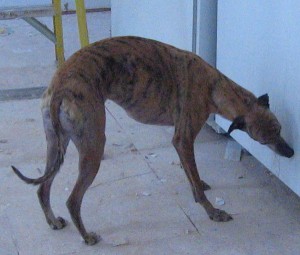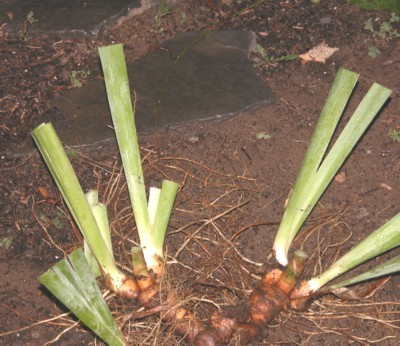Summer Waxing Strawberry Moon
It seems the gods of fate have not left our pack just yet. Today was the annual physical for all of our dogs, a process that begins with luring Vega and Rigel into the back of the truck. Hilo and Kona just jump up into the front seat. That all went fine. Kona and Rigel were a bit nervous, panting and walking around in the exam room at Foley Blvd. Animal Clinic. Hilo sat on my lap and Vega, still a bit dopey from the stings, I think, laid on the floor as if she lived there. Or, as if, as Kate suggested, she hoped she was invisible.
The exam went well enough. Vega came in at 115 lbs and Rigel at an even 100. Kona had gained half a pound and Hilo had lost a pound and a half. During the results, Dr. Roger Barr, a friend now after 16 years of Irish Wolfhounds and Whippets, said he would, “save Hilo for the last.”
Our littlest girl and the dog most devoted to me has some form of kidney disease. Roger says within two months or so she should start to show symptoms as her kidney functions slowly shut down. There’s not much to be done about it. A round of antibiotics could, but probably won’t, knock out a pyelonephritis, if it’s there. If it is an infection, then her kidney function tests will return to normal. It’s possible, but not likely.
Hilo is 9, so she’s not a young dog, but Emma was 14 when she died a couple of weeks ago. Hilo’s not gone yet, we have some time with her, in some senses as we always have, but now with a knowledge that those times are nearing an end.
Each dog is different and special. When they die, a unique aspect of our life here comes to a finish. It is the unique and the special traits or memories we recall when we speak of them in later years. Celt’s stepping on my snow shoes, barking at the flapping black plastic bag, receiving attention at the St. Kate’s Art Fair as if it were his due. Buck’s careful positioning of the pillows and blankets so he could lie down on the perfect spot. Iris retrieving and shredding tissues. Emma standing on the tree.
When they die, a unique aspect of our life here comes to a finish. It is the unique and the special traits or memories we recall when we speak of them in later years. Celt’s stepping on my snow shoes, barking at the flapping black plastic bag, receiving attention at the St. Kate’s Art Fair as if it were his due. Buck’s careful positioning of the pillows and blankets so he could lie down on the perfect spot. Iris retrieving and shredding tissues. Emma standing on the tree.
But in the immediate aftermath of a death it is the hole in the fabric of our life that tears the heart. We were seven and now we are six. Soon, if Roger Barr is right, we will be five.

 recall. The furled hosta leaves that come up in a tightly packed spiral have begun to uncurl. Dicentra have full leaves now, though no flowers yet. A few iris have pushed blossoms up, a purple variety I particularly like opens early. Even though they will not bear flowers until July the true lilies have already grown well past six inches, some with gentle leaves and others with leaves that look like a packed icanthus, an Egyptian temple column rising out of this northern soil.
recall. The furled hosta leaves that come up in a tightly packed spiral have begun to uncurl. Dicentra have full leaves now, though no flowers yet. A few iris have pushed blossoms up, a purple variety I particularly like opens early. Even though they will not bear flowers until July the true lilies have already grown well past six inches, some with gentle leaves and others with leaves that look like a packed icanthus, an Egyptian temple column rising out of this northern soil.